After a wondeful evening in Odeceixe, we slept very well and slowly got packed up to continue our trip down the west coast of Portugal. It was Saturday morning, so we figured there must be some pastelarias open even in a village as tiny as this. I was very pleasantly surprised to see a Paderia (bread bakery) sign on a side street, however.
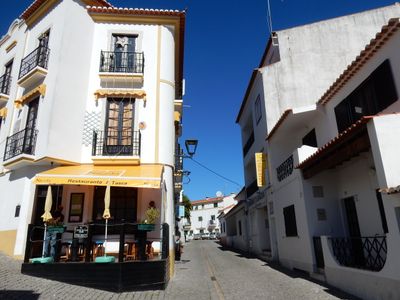
You need to check every side street. Magic awaits!
The inside of the bakery was very small but the shelves were full of bread, buns and croissants. I had my morning coffee and pastry and tried, in my best Portuguese, to explain that I was a baker and their bread looked very good. I made some sense, because the clerk called over the owner (who spoke very good english) and she invited us next door to the bakery.
The owner's mother, a delightful elderly lady who only spoke Portuguese gave us a tour of the shop. Two huge mixers, a big work bench, and a massive deck oven. The bakery was spotless; the bakers came in at 8pm Friday night to do the baking so by 10am Saturday, all the work was done.
Then she surprised the heck out of me. She took us around the side of the oven and showed me a room with wood stacked floor to ceiling. The deck oven was wood fired! There was a small firebox beside the deck oven which held the fire. I don't really know how she regulated the heat, but I think the fire heats a boiler and the oven is heated by circulating hot water (you can buy gas fired 'steam tube' ovens in North America.) Still, I don't know how they could adjust things in a wood fired oven that large.
And then we were back on the road, heading south along the coast to Arrifana. It's an area that came highly recommended by the lady at the Faro tourist office and it did not disappoint in any way. We parked high up on the top of a cliff, far too scared to drive down to the beach, then walked along the top, through a small village, to a point overlooking the Atlantic. Sheer cliffs and broken rocks were all around us, with the surf pounding the rocks below.
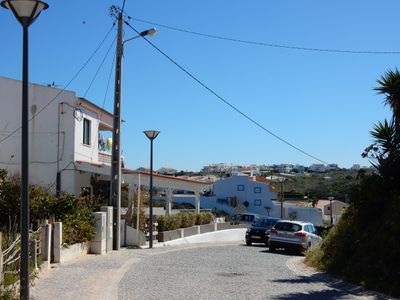
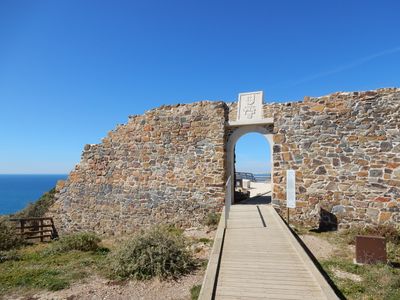
It looked dangerous and it was. We saw a steady stream of locals walking and driving north to the edge of the cliff. When we looked out past them, we saw a rescue helicopter and two boats alongside some particularly nasty looking rocks. We couldn't make out their objective, but the helicopter flew so low, and hovered for so long, that I'm certain they were performing a rescue. After 20 minutes or so the helicopter left and the locals went home. I hope whoever they were helping are alright today.
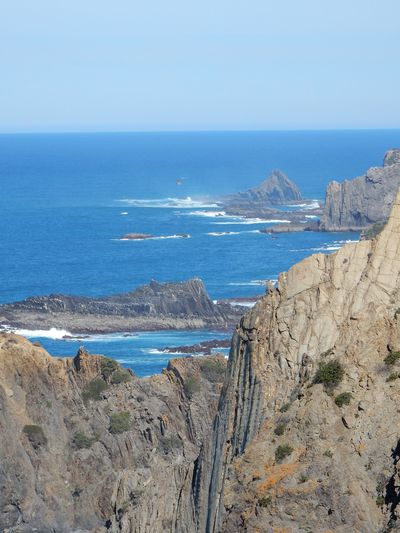
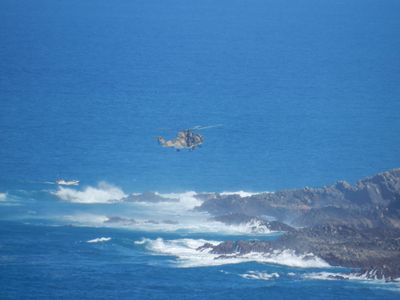
Then we went down to the beach, along a narrow, twisting road with three switchbacks and a steady line of camper vans and surfer dudes. Arrifana is a surfing hotspot it seems. There were surf lessons going on at one end of the beach, and a stream of fit and sexy surfers along the rest of the beach.
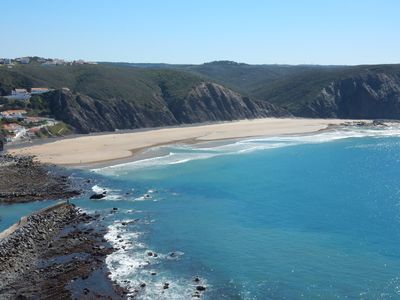
The view of the beach from the point. Time to get down to the water!

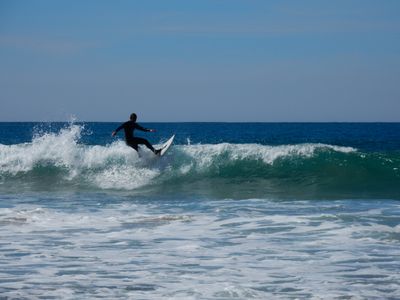
We didn't surf, but we did walk along the beach, wade into the water and marvel at the cliffs around us. This beach especially was extremely shallow close to shore, so we could walk out a long way without getting to wet.
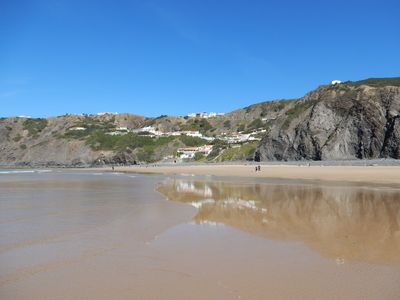
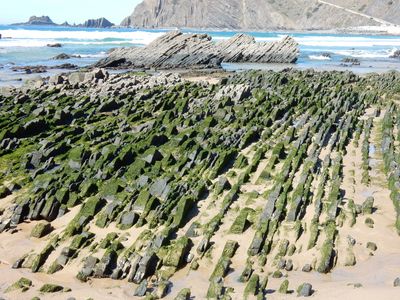
After an leg burning hike back to our car, we drove for an hour further down the coast to the very tip of Portugal and the European continent, Cabo St. Vincente. It's the western most point in Europe, and if I looked really, really hard in the west I'm sure I could see New Jersey. Perhaps not. But we scrambled over the rocks as close to the edge as we dared (we were still very high up above the water) watched the fishermen bobbing violently in their boats near the cliff walls, had a nice conversation with two travellers from Minnesota, then headed east, back into Portugal, to another beach we had passed on the drive to the tip.
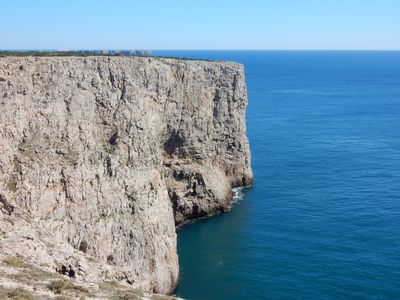
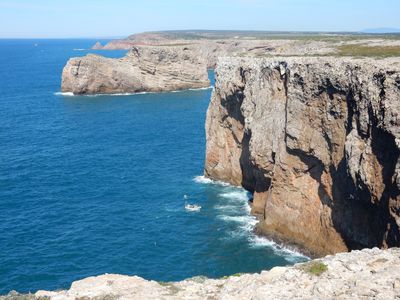
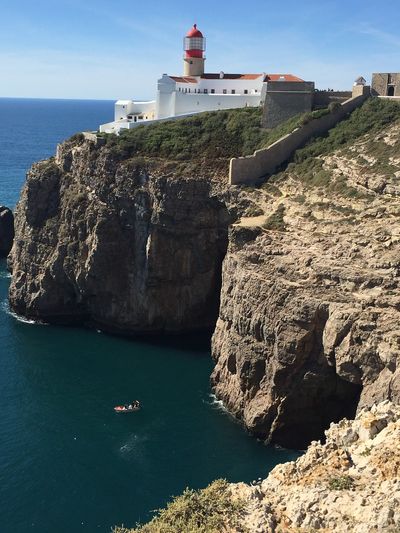
I'm not exactly sure of the name of our final beach of the day, but it was just east of Cabo St. Vincente. It didn't seem possible, but the water was clearer, the surf was livlier, and the cliffs more spectacular than any of the beaches we had been to so far. Perhaps it was because the hike down was steeper and more treacherous than any other; no cobblestones here, just irregular steps with many of the rocks broken away. Or maybe it was because there were no more than a dozen people on the entire beach. But it was thrilling, and we dawdled along for over an hour here.
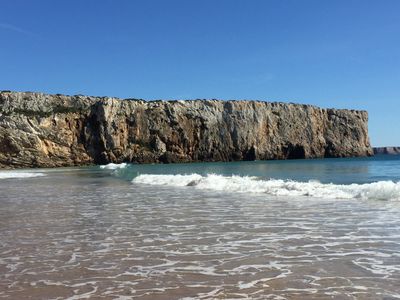
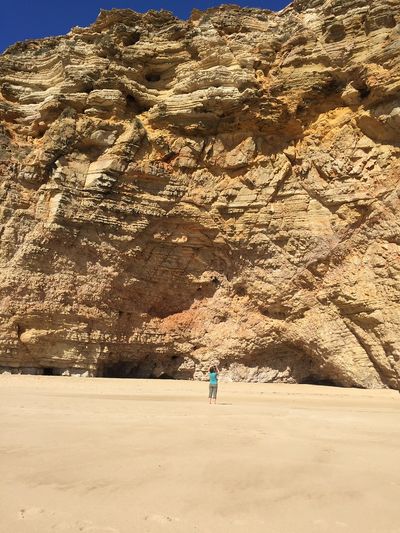
At the very end of the beach, were the sand, surf and rocks met, there was a little cave that we could just get to without swimming. It opened into a huge cavern, open to the sky above. We imagined that this is where we could hang out if we were abandoned on a desert island. We'd survive in the cave, until the tide came in at least.
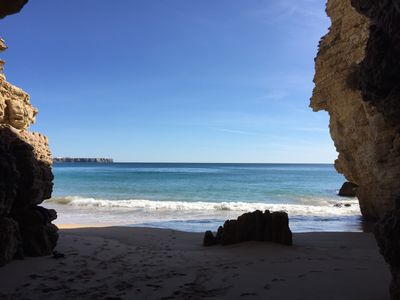
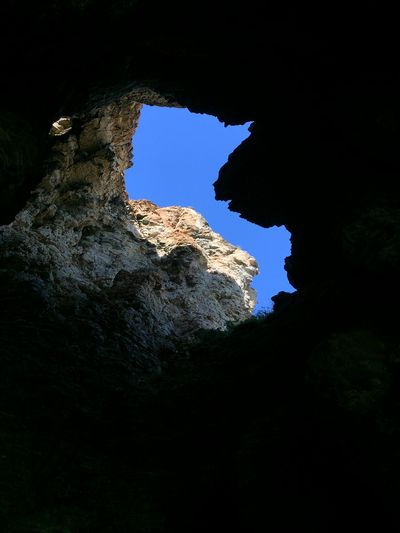
And then it was one more hike back to the car and a final push along the highway. Through Sagres, Lagos and Portimao, stopping beside the highway for another bag of oranges. East past Faro and Olhao, and on to our final stop in Portugal, Tavira. Here the guidebooks, Cindy's research and the Faro tourist office lady all agreed - Tavira is a delightful place to finish a tour of the Algarve. But that's for another post.